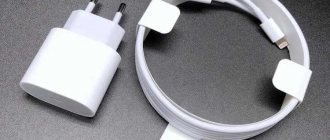We can safely say that every person, to one degree or another, has experienced an electric discharge. Not only an electrical appliance, but also a person can receive an electric shock. Bioelectric impulses appear when life begins and disappear with the onset of death. Let's consider how contact with electricity affects a person and how to avoid it.
Scientific explanation of why a person receives an electric shock
Everyone is probably familiar with static electricity!
In fact, find the answer to the question: “Why does a person get electric shock?” not so difficult. To do this, just open a physics textbook. The reason for electric shock lies in static electricity. Let's remember the school curriculum: static electricity is a set of phenomena that are associated with the emergence, conservation and relaxation of free charges.
We regularly encounter static electricity in everyday life. For example, if there is a woolen carpet on the floor, then if any part of the body rubs against it, the person will receive a negative charge, while the carpet itself will be positively charged. Another example of static electricity is the electrification of a plastic comb. During the process of combing, it becomes negatively charged, and the hair, in turn, receives a positive charge. Thus, we conclude that a free electric charge arises in the process of friction of one object against another. This is especially noticeable if the items are made of synthetic materials.
Well, aren’t you tired of school facts yet? Then let's go even deeper! Can you guess how free charges are formed? Everything is simple here: in the process of friction of these same objects, the particles become actively moving. Accordingly, the balance is disrupted, and this balance is called static electricity. Outwardly, it manifests itself through a small click and spark. And, of course, a feeling that makes us pull back.
Well, we'll finish with the school curriculum. Unless you are interested in why not every person receives an electric shock... Well, since it’s interesting, I’ll tell you. In general, people are quite different by nature. This extends to many aspects, including how a person stores electrical charge. After all, one person can easily wear thermal underwear, a sweater made of natural wool, and felt boots in addition, but we will not see any signs of static electricity. Another, on the contrary, once tries on a T-shirt with barely noticeable synthetic fibers, and immediately begins to receive an electric shock. What is this if not the law of meanness?!
Oddly enough, this has nothing to do with the law of meanness. As physicists say, every person is capable of accumulating an electrical charge. But our electrical capacity is very different. This is the answer to the question why not every person receives an electric shock.
From the history
In ancient times, people were aware of the phenomenon of amber, which attracts small objects to itself when rubbed. This stone was associated among people with a magnet and its ability to attract and personified the mysterious essence of both substances. In ancient times, people believed that they had magical properties and could transfer their qualities to the object they attracted.
The study of statics began with the research of Coulomb, Galvani, Volta and other outstanding minds in the second half of the 18th century. The years 1750–1780 even went down in the history of physics as the “period of electricity from friction,” and the scientific research of scientists of that period and later subsequently formed the basis of all electrical engineering.
When does a person feel a charge?
In addition to synthetic materials, they are well electrified:
- amber products;
- fur items;
- human hair;
- ebonite and other types of plastic;
- paper.
In most cases, we are most likely to get electrocuted during the winter. This is no magic. It’s just that with the onset of the cold season, we increasingly wear woolen items, and there may be several of them. Another reason why we get electrocuted more often in winter is dry air. In winter it is much drier than in summer.
Are there psychological reasons?
A person who is constantly receiving electric shock makes others wary. He may be considered aggressive or angry, because, as they say, “sparks fly” from him.
Important! The electrical capacity of a particular human body does not depend in any way on the psychological state of its owner.
If a person is easily electrified, this means that the person:
- has a physical tendency to accumulate charge;
- does not know how to use antistatic agents;
- indifferent to such phenomena.
The only thing that can be done in such a situation, if you are uncomfortable with the clicks and sparks coming from it, is to give it an antistatic spray.
Is static electricity dangerous?
The effect of static electricity on the human body has not yet been studied.
There is nothing wrong with a person's ability to produce an electric charge. The maximum harm we can get from this is an unpleasant sensation during which we cry out: “Oh, I got an electric shock!” Such blows do not cause any harm to health or life. However, this is only the case if electrical discharges occur rarely. But what if a person receives electric shock regularly?!
It is impossible to say for sure how long-term exposure to static electricity affects human health - this issue has not been fully studied. However, those few experiments in which a person was exposed to prolonged exposure to static electricity indicate such consequences.
| Organ that is negatively affected | Consequences |
| Nervous system | The main reason that this day turns into a huge stress for you is that you rush into things at the last moment. Therefore, try to think through gifts in advance (and even look after them) and create a holiday menu. |
| The cardiovascular system | Heaviness in the stomach, overeating and nausea are signs that you have thoughtlessly approached the menu. Even if you cannot deny yourself the pleasure of preparing a lot of dishes, keep the portions small. |
| Respiratory system | It's hard to feel the New Year approaching when you're standing in an apron and cooking different dishes with both hands at the same time. Therefore, before you start cooking, create the appropriate mood in the house. Decorate your home with garland, turn on Christmas music, put up a Christmas tree (the smell of pine needles alone is worth it!). Believe me, in such an environment, the New Year’s bustle will seem like a holiday! |
How to deal with static electricity at home?
To deal with static electricity at home, follow these simple tips:
- Install a humidifier.
Most often, static electricity is formed in the winter season, especially in a dry room. The situation is aggravated by radiators, which heat our homes and, at the same time, make the air in it even drier. A home gadget such as an air humidifier will help normalize the level of humidity, and therefore significantly reduce the likelihood of static voltage. You can increase the humidity in the apartment using indoor flowers.
The situation will also improve if you do not immediately turn off the boiled kettle - water particles will get into the air and make it more humid. Tip: you can add your favorite spices, such as cinnamon and cloves, to boiling water. Aroma oils will also come in handy.
- Treat carpets with antistatic spray.
This spray can be easily found at any hardware store. Simply spray the product onto the carpet and let it dry thoroughly. This method will significantly reduce the likelihood of static electricity. An antistatic agent can also be prepared at home.
To do this, add a little fabric softener to a container of water. You need to put a sprayer on top and treat the carpets. By the way, many carpets boast excellent antistatic properties. In this case, you will not need any spray.
- Use antistatic wipes.
This is simply a miracle remedy for car owners. Wipe your car seats with these wipes and you won't be exposed to static tension. By the way, antistatic spray can be used inside a car.
If the air is too dry
Excessively dry air can also cause everything around to become electrified. It needs to be moistened. You can do this in several ways:
- using conditioner with a humidifier;
- spraying the room with a spray bottle;
- placing a container of water in the corner.
Option 1
If you use your air conditioner frequently, the air in the room will become even drier than usual - moisture is removed while the device is running. But many modern models of household air conditioners are equipped with humidifiers, and it is best to choose one.
Important! A device for increasing humidity can be purchased separately - it costs much less than an air conditioner.
Option 2
The most ordinary sprayer can help cope with dry air - for example, the kind that is used to spray plants. True, you will have to humidify the air.
Important! Spray water in the room you are in about once an hour.
Option 3
If you don’t have time to tinker with a spray bottle, just place a basin in the corner and fill it with water. In not particularly hot weather, this will be enough to reduce or even eliminate static electricity.
How to deal with static tension on the body?
Although static electricity is a nuisance, it is easy to get rid of.
To stop shocking everyone around you, take note of a couple of tips:
- Moisturize your body regularly.
Our body becomes a store of electrical charge when it dries out. Therefore, immediately after taking a bath, apply nourishing lotion or cream to your entire body. It will not only moisturize your skin, but also protect you from static electricity. It would be a good idea to use lotion throughout the day.
- Change your wardrobe.
Try to wear clothes made from natural materials, and synthetics only in rare cases. If you need to get rid of static tension on your clothes as soon as possible, use an antistatic agent or, as a last resort, hairspray. Spraying water on clothes is useless, because it will only act until it dries.
- Choose shoes with the right soles.
Shoes with leather soles are considered correct in terms of protection against static charge. It neutralizes the charge. Shoes with rubber soles, on the other hand, accumulate it. If the house is warm, walk without shoes. If you work with electronic devices, wear appropriate shoes that have special elements in the soles.
- Prevent static electricity from appearing on washed laundry.
To prevent washed clothes from accumulating an electrical charge, sprinkle a small amount of baking soda on the items immediately before washing. It will prevent the appearance of electrical charges. The amount of baking soda directly depends on the number of things. If there are a lot of them, add half a glass of soda. For small amounts of laundry, add 2-3 tablespoons. Tip: adding baking soda will have a positive effect on the softness of your laundry. If you dry clothes in a special dryer, wipe it with a damp cloth or place a sponge soaked in water before adding clothes.
- Shake washed clothes.
After removing items from the washing machine, shake them well before drying. By the way, drying clothes in the fresh air reduces the likelihood of static electricity.
Please note: ordinary table vinegar will help prevent the occurrence of static electricity on washed laundry. It should be added to the washing machine immediately before switching it to the rinse cycle. Pour vinegar strictly into the special compartment for rinse aid. The product can be combined with fabric softener - this will prevent the appearance of an unpleasant vinegar smell.
Impact on a person
People wear clothes and shoes made from materials that do not conduct current. These can be not only natural fabrics such as wool, but also synthetics. Electrification occurs during movement. Provided that the floor covering is made of a material that does not conduct electricity. A person gets an electric shock when coming into contact with objects made of dielectric materials. A person becomes electrified on his own. Sometimes he shocks those around him. Mild and sometimes painful tingling sensations on the skin are often its main symptom. At the same time, this is not as harmless a phenomenon as it seems.
Why is this unsafe for humans? This leads to injuries in the workplace. Electrification causes a reflex contraction of muscles, so a person’s coordination of movements may be impaired. As a result, even with a minor impact on the body, injuries can be severe - due to clothing getting into the working areas of the mechanism or due to a fall.
Statics generally have a bad effect on the human body. Because of it, performance decreases, vasospasm occurs, and blood pressure increases. Below we will consider what to do to prevent electric shock.
How to neutralize static electricity quickly: step-by-step instructions
If you need to get rid of static electricity in minutes, check out these life hacks!
| Steps | Meaning |
| Step #1: Use a pin. | Simply attach a pin to the seam of your pants or to the collar of your shirt. All electrical charges will be concentrated on the metal of the pin. |
| Step #2: Use metal hangers. | To quickly remove the charge from clothing, touch it with a metal hanger. They will immediately collect all the charge on themselves. |
| Step #3: Carry something metal in your pocket. | If you are the “lucky one” who gets electrocuted on a regular basis, put a coin or metal keychain in your pocket. Touch this thing from time to time, it will “ground” you. |
How to determine the cause and why the zero does not give an electric shock
If headphones or a gas pipe are electrocuted in the house, then you need to diagnose this problem. Likewise, if current starts flowing during welding, it means there are exposed wires somewhere. Initially, in order to eliminate the cause, it must be discovered.
It is much better to entrust such a process to professionals who have:
For a specialist of the highest category, it will not be difficult to identify moments in the form of theft of electricity, which is often carried out by neighbors, as well as breakdowns in wires. Such a sensitive situation is detected using a special highly sensitive device, which is owned by special companies.
What kind of lighting do you prefer?
Built-in Chandelier
Diagnostics is needed in any case, regardless of which particular object in the house is experiencing electric shock, for example, a bathroom, boiler, etc.
Is there any point in metal things?
If you still doubt the effectiveness of pins and other metal devices in dealing with electric shocks, take a look here!
| Advantages | Flaws |
| Having a safety pin will allow you to reliably protect yourself (and at the same time those who are in close proximity to you) from electrical discharges. | You will have to transfer the “magic” pin from bag to bag, from pocket to pocket. During the first few days, you will most likely constantly lose metal items. |
| The pin is small and therefore invisible. Therefore, you don't have to worry about it ruining your image. | A pin attached to the wrong side of a garment can come undone at the most inopportune moment. |
| The pin will protect you from the evil eye if you believe in it. | A pin won't protect you from the evil eye if you don't believe in it. |
Which blanket or plaid to choose to avoid electrification
Depending on the type of filling, blankets can be natural, synthetic or mixed. We hope we have convinced you that synthetic ones are more susceptible to electrification, but natural ones can also “fight”. Which also come in two types:
- in a case;
- knitted.
Blankets that are in a cover made of natural fabrics are almost not subject to the accumulation of static. Knitted ones are also better to wear with a duvet cover made of calico, poplin or satin. Of course, we are now talking about blankets made of wool: merino, sheep, camel.
Materials of plant origin do not accumulate electricity.
Tips for those who regularly receive electric shocks
For those who are already tired of electric shocks, there are a couple more practical tips:
- Reduce discomfort.
To minimize shock pain, touch the metal object to parts of your body that are less sensitive. These are the elbows and knuckles.
- Refueling the car.
While the vehicle is being refueled, all passengers must leave the vehicle. Otherwise, there is a high risk of static discharge and sparks. And it is already capable of causing a fire.
- Volatiles.
Materials that ignite quickly should be stored in a safe place.
- Conditioner for removing electricity from the carpet.
After spraying the carpet, let it dry completely. Otherwise, the expected effect will not occur.
How to quickly remove static electricity from clothes:
Electrostatic energy in the driver-vehicle system
The machine, which is isolated from the ground by rubber tires and has many plastic parts and synthetic fabric coverings, is itself an electrical capacitor capable of storing high-energy static electricity. When a car door is opened by a driver whose body has much less electrical resistance than the dielectric of car tires, the car capacitor is discharged through the human body, and significant electric shocks are felt.
Basically, electrostatic energy can accumulate when drivers' clothing rubs against synthetic covers, as well as due to interference from the electromagnetic field during a thunderstorm. In addition, numerous electronic and electrical equipment contributes to the accumulation of static energy, which, when discharged, shocks a person. However, when the atmospheric humidity is more than 85%, the accumulation of high-energy electrostatic charge does not occur.
Previously, all fuel tankers had a special circuit in their design, through which the accumulated static charge flowed into the ground. Today, special antistatic coatings and strips are used for self-discharge. In addition, a number of drivers use special methods of opening doors that eliminate discomfort when exposed to electrostatic discharge.











